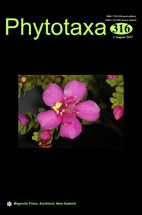Abstract
Macroscopic cyanobacterial biofilms were collected from alluvial plain soils and estuarine mangrove soils representing the Lower Gangetic Plains of South East Asia (India). The composition of the biofilms was investigated using light microscopy and field emission scanning electron microscopy of collected samples. In this study four simple trichal non-heterocytous morphotypes were found to be unique. Out of four, three morphotypes clearly showed differences with respect to described taxa as based on most recent taxonomic classification and possibly represent new report from the Indian subcontinent. One morphotype was successfully established under culture conditions and described as Leptolyngbya indica sp. nov. isolated from the alluvial arsenic affected rice field soil. This study provides vital information on morphotypic diversity of Cyanobacteria from specific biotopes which can contribute key information on their biogeography and potential application in green remediation.

